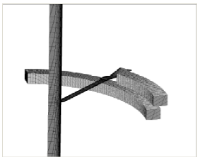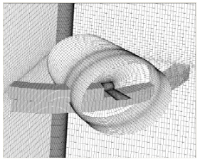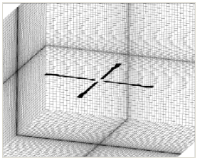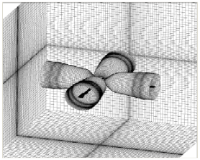Mesh generation
Staff:
Mesh generation
Numerical flow simulation is highly mesh dependent. Multiblock structured meshes are used in most of the Bristol flow-solvers, and so a multiblock mesh generation tool has been under development at Bristol for many years. The underlying technology is an interpolation-based approach with improved smoothness and orthogonality. It has also been extended to include the radial basis function-based deformation tools (see mesh deformation), to allow simple meshes to be generated, then deformed to more complex surfaces. This software is applicable to both fixed- and rotary-wing cases, and is fully automatic for simple geometries, i.e. requires no user-input except for a target number of cells. The code has been used by Agusta-Westland Helicopters and Liverpool University, as part of the national Rotorcraft Aeromechanics DARP programme.
The figure below shows three views of selected grid planes for an inviscid mesh around the MDO wing. (Below left) Surface, wake slit and chordwise plane
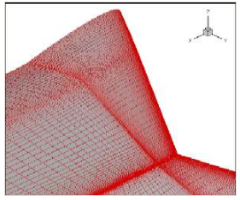
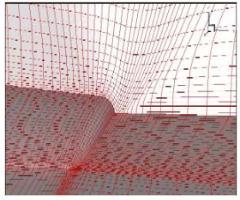
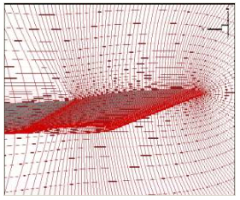
Views of the grid structure near the blade tip for a hovering rotor case, and views of forward flight cases.
Blade surface and plane near tip for inviscid hover case (2 million points).
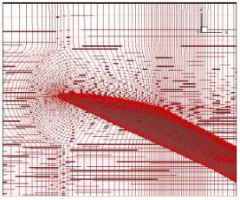
Grid in rotor disk and block structure at hub for forward flight case (8 million points)
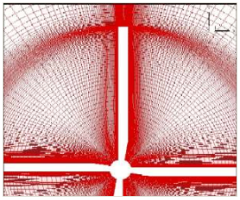
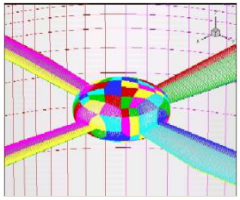
Chimera
Much of the technology developed at Bristol has been adopted in other research programmes. For example, Prof Allen was the task leader for volume grid generation, deformation, and visualisation within the three year 3M ECU EROS project. This was an EC funded collaborative contract to develop a common European suite of software for rotorcraft flow solution. The overlapping structured, or CHIMERA, grid approach was used.
Some sample overlapping CHIMERA meshes for hover and forward flight
